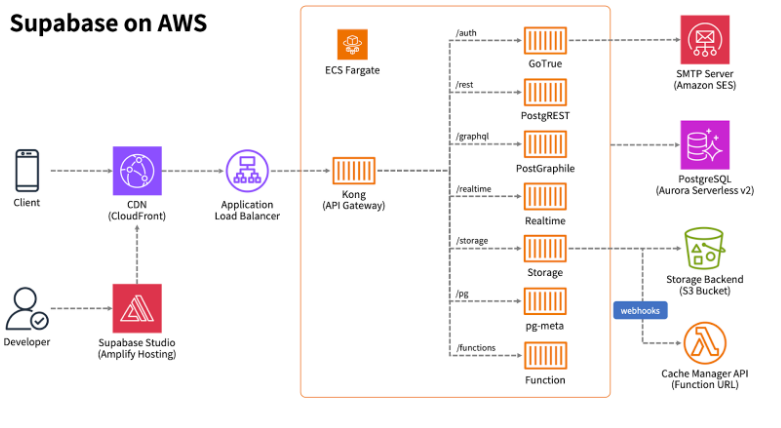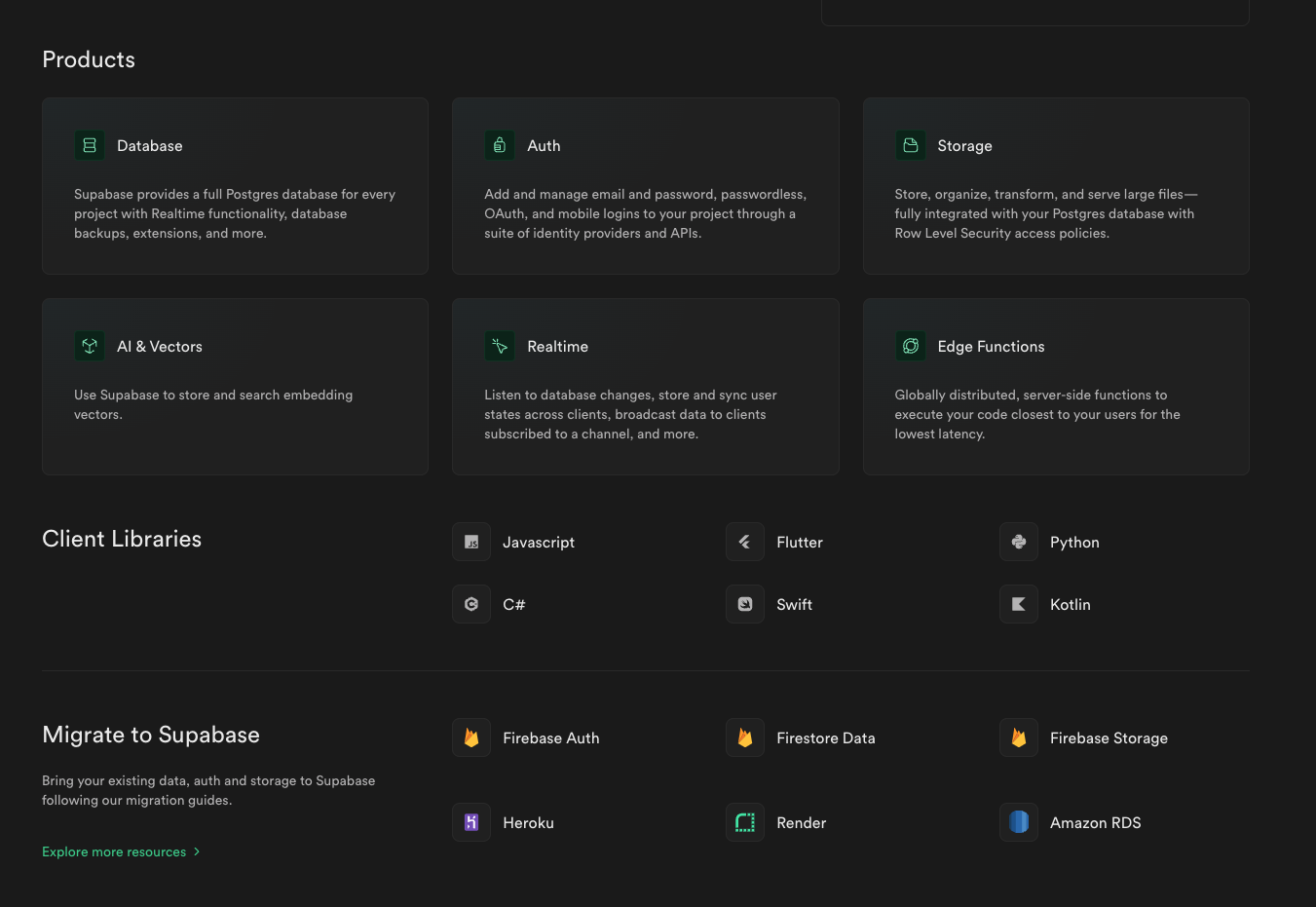If you are reading this, it's safe to assume that you may or may not have heard about supabase. I know the post is supposed to be about hosting supabase yourself on AWS but I feel the need to add a few introductory lines to explain why it is an amazing solution to some of your backend issues.
Goal of this Post
To provide you with all the info you need to have a Backend as a Service (Supabase) running and infra within your full control. We would be trying different deployment options on AWS so get ready to get your hands dirty.
- Deployment on EC2
- Deployment on Elastic Beanstalk
- Deployment using terraform
- Deployment using Cloudformation / CDK template
Architectural Diagram

What is Supabase?
Supabase is an open-source platform for building web and mobile applications. It provides a comprehensive set of backend services and tools that simplify the development of modern, data-driven applications. Key features and components of Supabase include:
- PostgreSQL Database
- Authentication
- Real-Time Data Synchronization
- RESTful API Generation
- Serverless Functions
- Database and Schema Management
- Real-World Use Cases
- Open Source
- Community and Documentation

Supabase’s goal is to simplify the backend development process and empower developers to create feature-rich applications without the need for extensive backend infrastructure setup. It is often chosen by developers and organizations looking for a flexible, open-source, and developer-friendly solution for building web and mobile apps with modern features like real-time updates and user authentication.
\ Depending on your business use case and the stage you are on your development, you might need to also consider AWS AMPLIFY. AWS Amplify offers a broader range of services, a larger ecosystem, and deeper integration with AWS’s extensive cloud offerings. Choosing between the two depends on your specific project requirements, familiarity with AWS, and your desire for a more comprehensive cloud solution versus a more specialized and focused backend platform like Supabase.

Why is Supabase gaining popularity?
Supabase has been gaining popularity for several reasons, reflecting the evolving landscape of web and mobile application development and the needs of modern developers:
- Open Source Foundation: Supabase is built on open-source technologies, most notably PostgreSQL. This appeals to developers who appreciate open-source software’s transparency, flexibility, and community-driven development.
- Developer-Friendly: Supabase is designed with developers in mind. It provides a simple and intuitive interface, reducing the complexity of backend development and allowing developers to focus on building features rather than managing infrastructure.
- Full-Stack Solution: Supabase offers a comprehensive set of tools and services, including a PostgreSQL database, authentication, real-time data synchronization, RESTful API generation, and more. This makes it a one-stop solution for many common backend needs.
- Real-Time Features: Real-time data synchronization is a key feature of Supabase. It allows developers to easily build real-time applications and features, such as chat apps, collaborative tools, and live dashboards.
- SQL Database: Supabase uses PostgreSQL as its backend database, which is known for its power, scalability, and support for complex queries. Developers who are familiar with SQL can leverage their existing skills.
-
Customization and Control: For developers who want more control over their backend, Supabase allows them to write custom SQL queries, stored procedures, and serverless functions.
- Strong Authentication: Supabase provides built-in authentication with support for various authentication providers, making it easy to implement secure user authentication and authorization.
- Open API Standards: Supabase generates RESTful APIs automatically from the database schema, conforming to open standards. This simplifies API development and integration with frontend frameworks.
- Community and Documentation: Supabase has an active and growing community of developers, which fosters collaboration, knowledge sharing, and the development of additional resources and tools. The availability of extensive documentation and tutorials also aids in its adoption.
- Cost-Effective: Supabase offers a free tier with reasonable usage limits, making it accessible to individual developers and small projects. This cost-effectiveness appeals to startups and organizations with limited budgets.
- Real-World Use Cases: Supabase is increasingly being used in real-world applications across various industries, demonstrating its ability to meet the demands of production-level projects.
- Integration with Existing Services: Supabase can be integrated with other services and cloud providers, allowing developers to mix and match technologies to suit their specific needs.
Next part of the article will be published soon.


 Is GitOps worth the hype? (ArgoCD)
Is GitOps worth the hype? (ArgoCD)
 DevOps and Artificial intelligence - how a DevOps team take advantage of AI and ML
DevOps and Artificial intelligence - how a DevOps team take advantage of AI and ML
 Security in cloud native
Security in cloud native